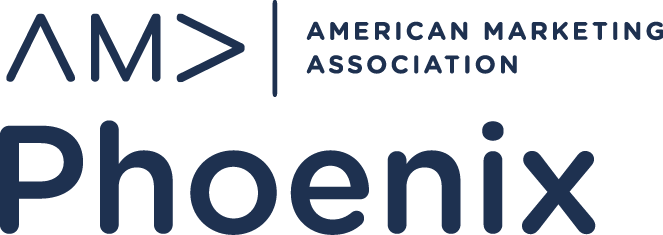- June 20, 2023
- Posted by: Featured
- Category: Blog

9 Mind Mapping Tools & Tips to Brainstorm Better Ideas
To help you elevate your marketing brainstorming sessions, we’ve gathered nine mind-mapping tool recommendations from CEOs, founders, and marketing professionals. From visualizing knowledge gaps with MindNode to using ContextMinds to supercharge your strategy, discover the best strategies and tools to optimize your creative process.
- MindNode: Visualize Knowledge Gaps
- Miro: Collaborative Marketing Planning
- MindMeister: Intuitive and Comprehensive
- ClickUp: Versatile and Actionable
- Pencil and Paper: Get Tech Out of the Way
- XMind: Built-in Templates and Prioritization
- Figma: Flexible, Dynamic Design
- Google Trends: Discover Ideas
- ContextMinds: Supercharge and Streamline
MindNode: Visualize Knowledge Gaps
One potential tip to improve marketing brainstorming sessions is to use a mind-mapping software program such as MindNode. Unlike traditional brainstorming, which typically involves writing focused ideas on poster paper or a whiteboard, with MindNode users can construct and visualize an unlimited set of relationships between concepts.
This type of mapping encourages idea branching and intuitive identification of patterns that can elicit creative insights for solving complex marketing challenges. By enhancing the visual communication of thoughts, it’s possible to quickly identify gaps in knowledge as well as review objectives and possible actions by uncovering deeper connections between related topics.
 Tasia Duske
Tasia Duske
CEO, Museum Hack
Miro: Collaborative Marketing Planning
The QBench team loves using Miro to plan marketing and customer outreach activities. With Miro’s collaborative features, everyone can brainstorm ideas, map out strategies, and visually organize their plans in a centralized virtual space.
The platform enables real-time collaboration, allowing team members to contribute their input, track progress, and ensure alignment across different marketing initiatives and customer outreach campaigns.
 Trevor Ewen
Trevor Ewen
COO, QBench
MindMeister: Intuitive and Comprehensive
MindMeister is my personal favorite. It’s an intuitive online mind-mapping tool that allows you to visually organize ideas, concepts, and strategies. With its user-friendly interface, you can create, collaborate, and share mind maps in real time with your marketing team, regardless of geographical location.
This tool enables you to capture and connect thoughts, explore different branches of ideas, and uncover new perspectives. Additionally, MindMeister offers features like custom formatting, multimedia integration, and task management, making it a comprehensive tool to enhance creativity and productivity during marketing brainstorming sessions.
 Josh Amishav
Josh Amishav
Founder and CEO, Breachsense
ClickUp: Versatile and Actionable
Although ClickUp isn’t exactly for mind mapping, it offers features that have significantly enhanced our marketing brainstorming sessions.
With customizable task structures, we can create categories for different marketing strategies, channels, and target audiences. Collaboration tools like comments and real-time updates facilitate idea sharing and feedback among the team. Additionally, attachments allow visual examples and reference materials to be included.
Once the ideas are in place, checklists and task dependencies help break them down into actionable steps. It’s also great that integration with project management tools ensures the seamless incorporation of the final ideas into marketing campaigns.
ClickUp’s versatility and collaboration features make it a useful platform for organizing ideas, collaborating with team members, and integrating brainstorming into marketing projects.
 Adam Wright
Adam Wright
CEO, Human Tonik
Pencil and Paper: Get Tech Out of the Way
As a solopreneur, my marketing brainstorming sessions involve me, myself, and I, and I’ve found nothing helps me more than old-fashioned pencil and paper. Having to think, write, and read engages more of my senses and improves recall. I can let the ideas flow without clunky technology getting in the way.
This method also helps me visualize my ideas in a way I prefer instead of using pre-set templates or trying to create my own design (I’m a writer, not a designer). I can spend more time generating ideas without wasting time figuring out tools and software. Once I explore my mind map, I preserve my ideas in tools like Google and Asana for later use.
 Alli Hill
Alli Hill
Founder and Director, Fleurish Freelance
XMind: Built-in Templates and Prioritization
XMind comes with various built-in templates and themes to get started quickly, which can spark creativity and improve brainstorming efficiency. When you map out marketing ideas with XMind, you can expand and collapse branches, add relationships between branches, insert images, and even annotate ideas with callouts.
You can also prioritize and categorize ideas using icons, stars, and progress markers, giving you a better visual understanding of how each idea relates to your overall marketing goals and objectives.
One of the benefits of using XMind is that it allows for real-time collaboration, meaning your team members can simultaneously contribute their ideas, comments, and feedback. This feature enhances shared understanding and drives collective creativity, ensuring that all participants are fully engaged and invested in the brainstorming session.
 Matthew Ramirez
Matthew Ramirez
CEO, Paraphrasing Tool
Figma: Flexible Dynamic Design
One tool that has significantly improved our marketing brainstorming sessions is Figma. Figma is a collaborative design tool that we use for mind-mapping and visualizing ideas in real time. It allows the team to brainstorm together, regardless of location, and instantly see each other’s thoughts and suggestions.
The flexibility of Figma enables us to easily rearrange and connect ideas, fostering a dynamic and productive brainstorming environment. By turning abstract ideas into visual concepts, it aids in better understanding and the development of creative solutions.
 Jaya Iyer
Jaya Iyer
Marketing Assistant, Teranga Digital Marketing
Google Trends: Discover Ideas
Google Trends is a massively underrated tool for analyzing topics, recent data, and coming up with campaigns based on what is currently happening.
For example, whether certain searches have spiked over a given period, or whether a very recent dip or increase in search behavior outlined by the trends can be used for expert commentary or reactive PR as part of a broader marketing campaign.
 James Parkinson
James Parkinson
Head of Marketing, Personnel Checks
ContextMinds: Supercharge and Streamline
If you’re in search of a tool to supercharge your marketing brainstorming sessions, let me drop a name—ContextMinds. What’s so great about it? Well, you add topics to your content map and the tool’s AI helps you out by suggesting a whole bunch of related keywords that are incredibly relevant.
And it’s not just about convenience. This is a tool that plays nicely with SEO strategies, showing you the search volume and keyword difficulty of everything right off the bat. You get to streamline your brainstorming process and at the same time, you’re setting yourself up for SEO success.
It’s the kind of tool that lets you focus more on the creative side of things and less on the nitty-gritty of keyword research.
 Juliet Dreamhunter
Juliet Dreamhunter
Founder, Juliety
Submit Your Answer
Would you like to submit an alternate answer to the question, “What is one mind-mapping tip or tool recommendation to improve your marketing brainstorming sessions? ”
